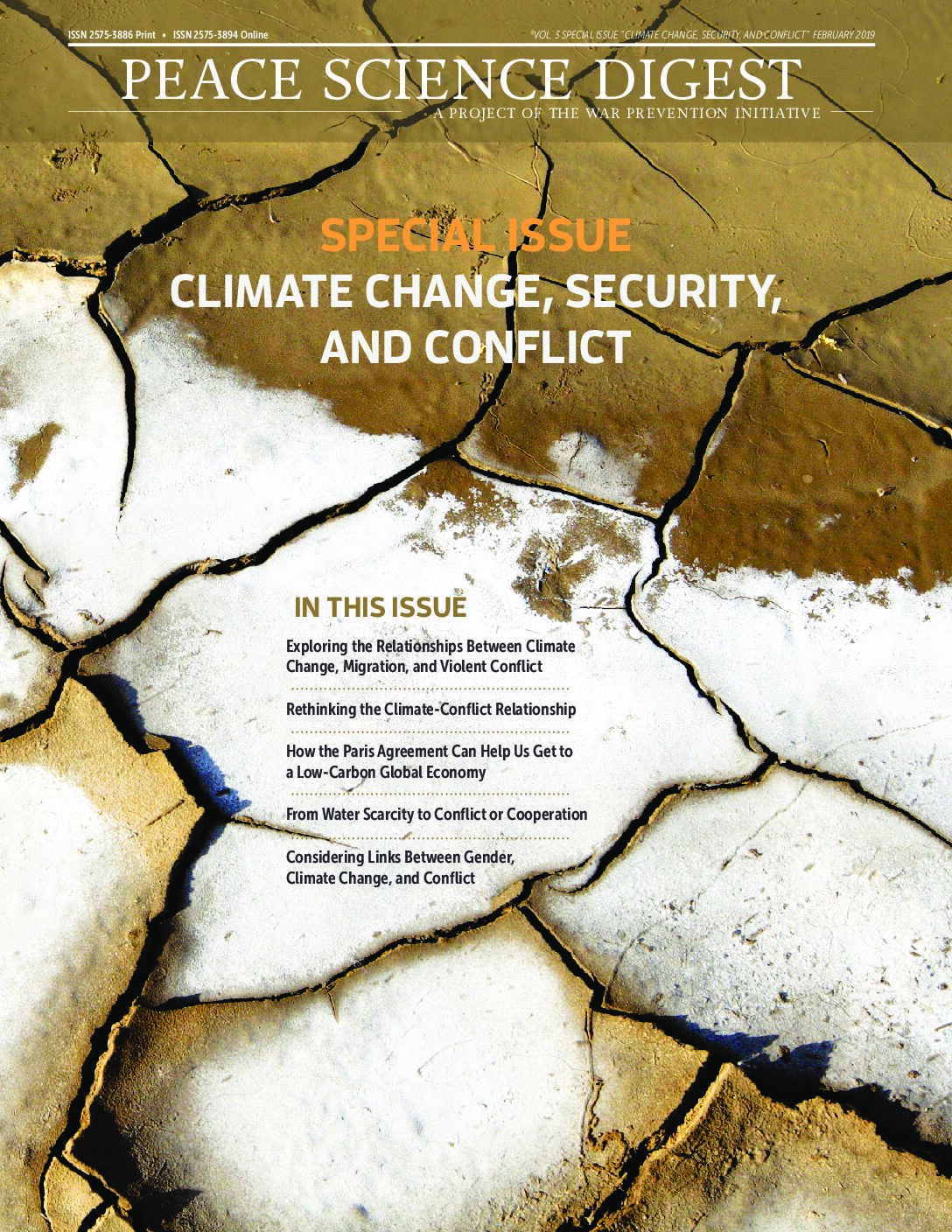This past October, the Intergovernmental Panel on Climate Change (IPCC) released a report alerting us all to the likely effects of inaction in the face of mounting global greenhouse gas (GHG) emissions—catastrophic events that could transpire as soon as 2040 if global emissions continue on their current trajectory and global temperatures rise even “just” 1.5 degrees Celsius above pre-industrial levels. These events would be accompanied by severe economic consequences: the report notes an estimated 54 trillion USD in damages. Climate change is no longer a far-off eventuality; it is happening now in our communities around the world: historically large wildfires in California, destructive storms in the Caribbean and in the south-eastern United States, droughts in East Africa and Central America, to name a few examples.
For our grandchildren, for our children, and even now for ourselves, the stakes are high, and global action is urgent. But why is the Peace Science Digest devoting an entire special issue to climate change? What does climate change have to do with war prevention and peace? There are a few levels on which we might consider the connections. The most obvious is perhaps the role climate change may play in instigating violent conflict (a relationship the first and second analyses in this special issue critically examine). Although climate-induced resource scarcity or extreme weather events do not automatically bring about violent conflict, there are certainly good arguments to be made for how environmental stressors can create conditions that make violent conflict more likely or that may exacerbate existing conflicts—Darfur and Syria, but also the water dimension of the Israeli/Palestinian conflict, come to mind. But, more broadly, climate change can itself be a form of insecurity. In other words, the same concern for human security that informs a commitment to war prevention and peace therefore also informs a commitment to mitigating climate change. Furthermore, framing climate change as a security issue helps us see it as the urgent issue that it is, one that will require a monumental global effort on a scale like that exerted during World War II.
The other level on which we might consider a connection is through the nonviolent resistance and peacemaking activities necessary to wean the global economy off fossil fuels and to negotiate global agreements that can facilitate action in this direction. Lessons learned from nonviolent resistance and negotiation scholarship can contribute to better strategizing—and therefore stronger climate movements and more effective climate agreements, both of which can pressure and constrain powerful actors (countries, corporations) who need to get on board now (see the third analysis in this special issue on the Paris Agreement). Furthermore, the resource scarcity exacerbated by climate change provides an opportunity for smart conflict management strategies, as indicated in the fourth analysis here on transboundary water cooperation.
Discussions about climate change—and efforts to both mitigate it and adapt to it—bring to our attention questions about how to address not only direct violence but also structural violence. As most of the research examined in this issue highlights in one way or another, we need to consider who overwhelmingly bears the costs of climate change, as well as the costs of reining it in. Who is more vulnerable, and who shoulders more of the burden? Climate action must be taken with careful attention to the distribution of costs across society and in tandem with action to transform existing inequalities (see the fifth analysis to consider the gender dimensions of these issues of power and inequality). These considerations are also important at the global level, where questions about how to justly, equitably distribute the costs of cutting GHG emissions have dominated climate negotiations, with industrialized countries bearing responsibility for the overwhelming majority of GHG emissions up to this point and developing countries becoming responsible for increasingly high emission levels as their economies industrialize.
- Exploring the Relationships Between Climate Change, Migration, and Violent Conflict
- Rethinking the Climate-Conflict Relationship
- How the Paris Agreement Can Help Us Get to a Low-Carbon Global Economy
- From Water Scarcity to Conflict or Cooperation
- Considering the Links Between Gender, Climate Change, and Conflict
Click on the icon below to download Special Issue Climate Change, Security, and Conflict
For the text-only format of this issue’s analyses, please click on the titles below or visit our Analysis Catalog
[catlist id=516]

